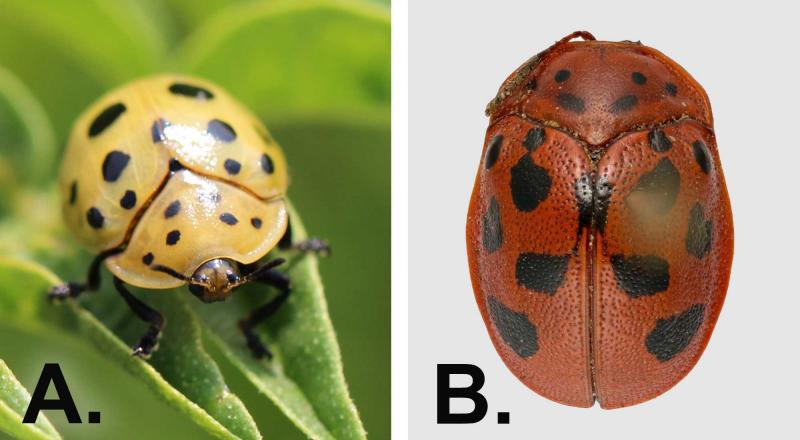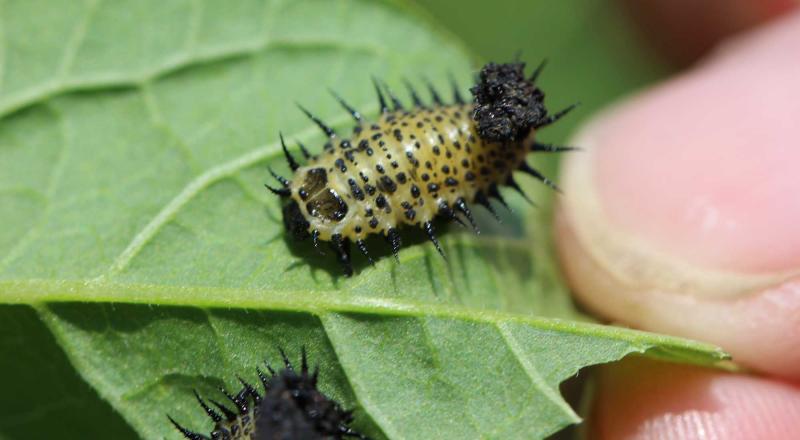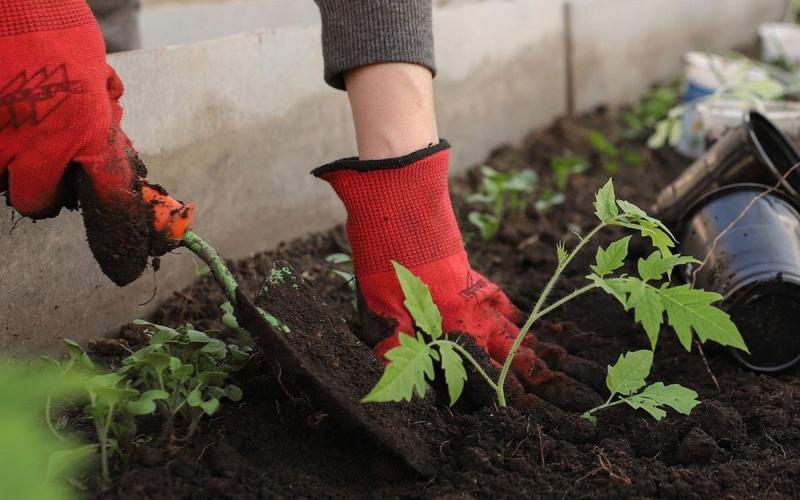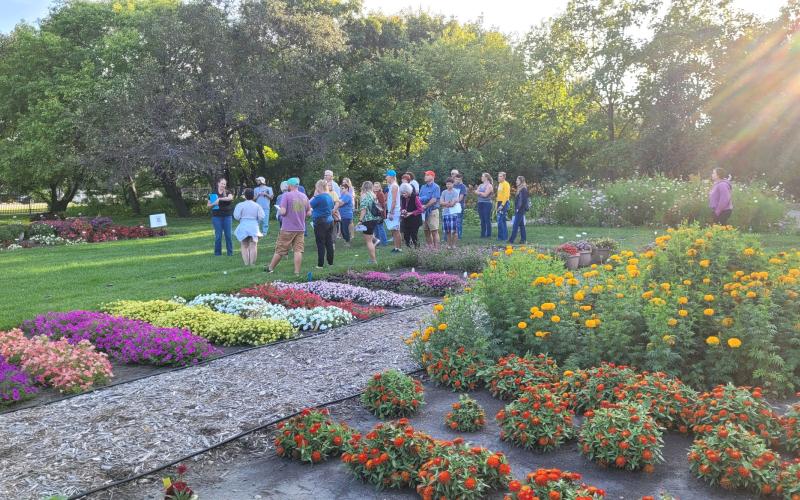
Every summer, we receive reports of what looks like a large yellow lady beetle, except that they are defoliating certain plants. It isn’t a lady beetle, it’s the Argus tortoise beetle. There are several species of tortoise beetles that can be found in South Dakota, and the Argus tortoise beetle is the largest.
Argus tortoise beetles are known to feed on plants in the Convolvulaceae family, which includes some common plants such as bindweed, morning glory and sweet potato.
Typically, Argus tortoise beetles aren’t something to be concerned about as they don’t feed on most garden plants and their presence on these plants is likely accidental.
Identification

The Argus tortoise beetle can range in color from light yellow (Figure 1-A) to orange or red (Figure 1-B). Typically, there are six black spots present on the pronotum (segment behind the head). The number of spots present on the elytra (hardened forewings) varies but is often six spots on each side with one spot in the middle. The adults are approximately 1/3 of an inch long.
The larvae of this species are also yellow with black spots, and generally attract attention because they will feed in groups (Figure 2). As a defense mechanism or camouflage, the larvae will also carry piles of frass (insect waste) around on their backs.


